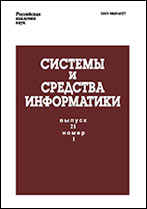|
This article is cited in 2 scientific papers (total in 2 papers)
Model for analyzing priority URLLC transmission with eMBB bit rate degradation and interruptions in 5G networks
I. A. Kochetkovaab, A. I. Kushchazlia, P. A. Kharina, S. Ya. Shorginb
a Peoples' Friendship University of Russia (RUDN University), 6 Miklukho- Maklaya Str., Moscow 117198, Russian Federation
b Federal Research Center "Computer Sciences and Control" of the Russian Academy of Sciences, 44-2 Vavilov Str., Moscow 119133, Russian Federation
Abstract:
For 5G, the coexistence of two scenarios within the same network — ultrareliable low-latency communication (URLLC) and enhanced mobile broadband (eMBB) — is an actual task. For a scheme with the occupation of not the whole, but a part of the resource block, a model of coexistence of narrow-band URLLC traffic and broadband eMBB traffic in the form of a queuing system with priority access — reducing and interrupting the service of broadband traffic when narrow-band traffic arrives — is proposed. The authors formulate the problem of maximizing the average speed of broadband traffic transmission by the values of speed levels and with restrictions on the probability of blocking and the probability of interrupting broadband traffic service. The results of a numerical analysis of priority access efficiency indicators, such as the average number of eMBB sessions and probability of service interruption, are presented.
Keywords:
5G, eMBB, URLLC, queuing system, priority admission control, interruption, bit rate degradation.
Received: 03.08.2021
Citation:
I. A. Kochetkova, A. I. Kushchazli, P. A. Kharin, S. Ya. Shorgin, “Model for analyzing priority URLLC transmission with eMBB bit rate degradation and interruptions in 5G networks”, Sistemy i Sredstva Inform., 31:3 (2021), 123–134
Linking options:
https://www.mathnet.ru/eng/ssi787 https://www.mathnet.ru/eng/ssi/v31/i3/p123
|

|




 Contact us:
Contact us: Terms of Use
Terms of Use
 Registration to the website
Registration to the website Logotypes
Logotypes








 Citation in format
Citation in format 
